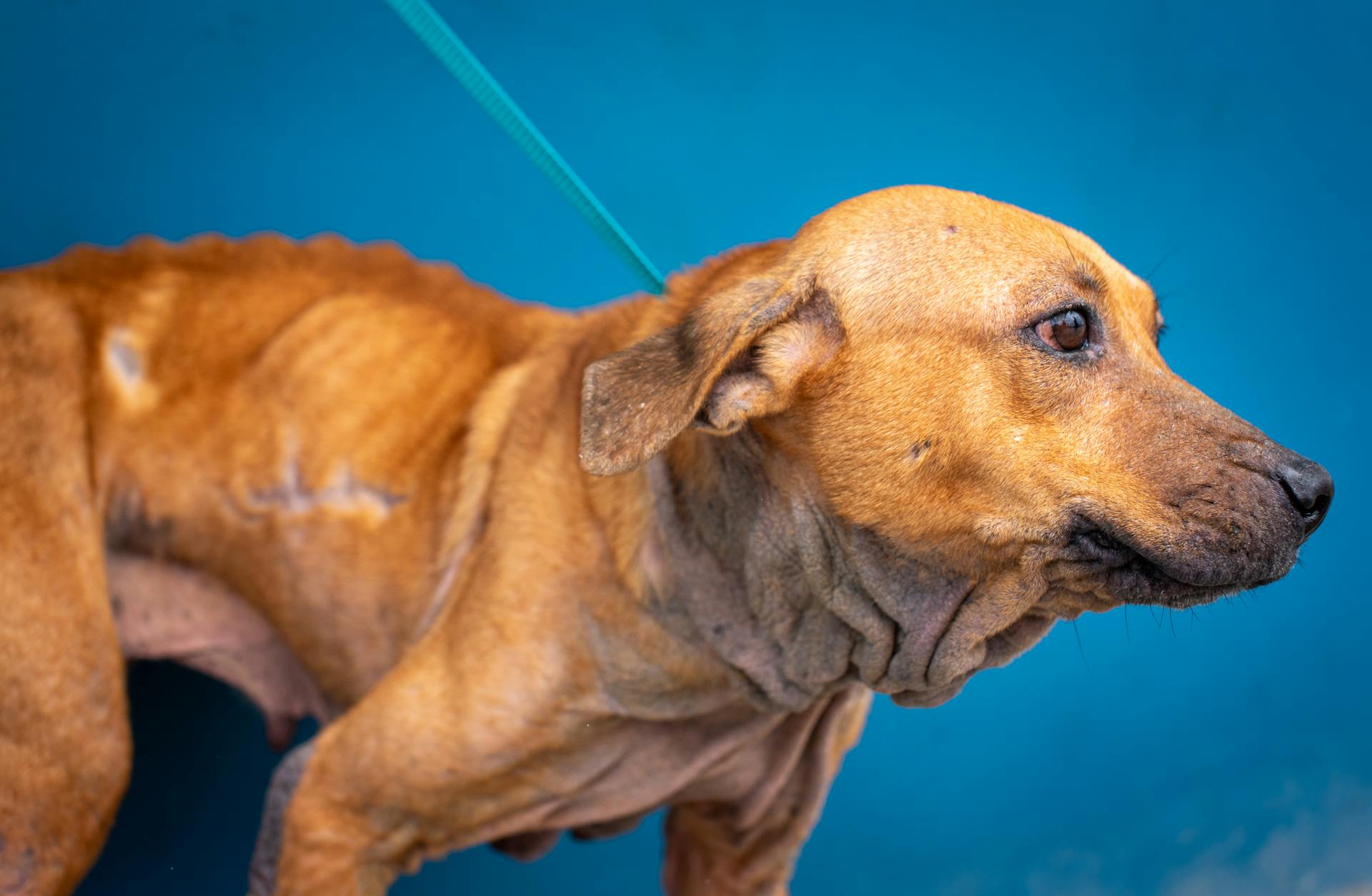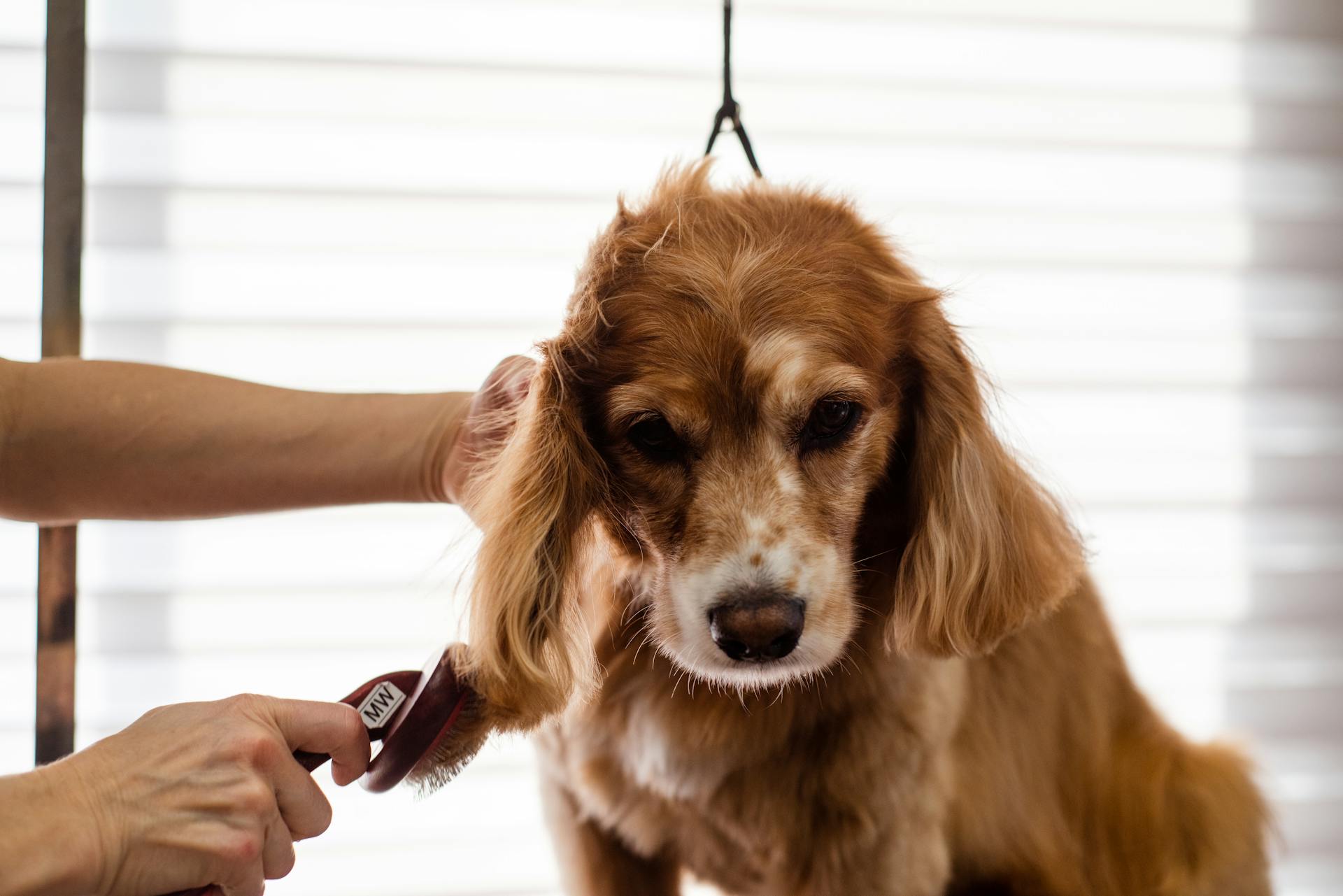
The Coton de Tulear and Havanese are two adorable breeds that have captured the hearts of many dog lovers. Both are small, fluffy, and friendly, but they have some key differences.
The Coton de Tulear originated in Madagascar and is known for its cotton-like coat, which requires regular grooming to prevent matting. This breed is also highly intelligent and trainable.
The Havanese, on the other hand, is an old breed from Cuba and is prized for its silky, hypoallergenic coat. With proper care, this breed can thrive in a variety of living situations.
Coton de Tulears are generally more energetic and playful than Havanese, requiring daily exercise to keep them happy and healthy.
Readers also liked: Short Haired Havanese
Breed Comparison
Both the Coton de Tulear and Havanese are small dog breeds that can make great companions. They are both purebred, hypoallergenic, and have average grooming needs.
Here are some key differences between the two breeds:
Both breeds are suitable for families with children and can get along well with other pets, including cats. However, they may not be the best fit for an office environment due to their energetic nature.
Choosing the Right Breed
When choosing the right breed, it's essential to consider factors like price and availability. The Coton de Tulear, for instance, can cost between $2,000 to $3,000, while the Havanese is generally priced between $900 and $1,200.
Both breeds are relatively easy to get, with frequent availability. If you're looking for a more affordable option, the Havanese might be the way to go.
However, if you're willing to invest in a show-quality dog, the Coton de Tulear's price can range from $3,000 to $4,000.
In terms of temperament, both breeds are known for their playful, intelligent, and affectionate nature. They're both great family dogs, but the Havanese might be a better fit if you have a busy household with frequent guest visits.
Here's a comparison of the two breeds' prices and availability:
Temperament
Temperament is a crucial aspect to consider when choosing a breed. Both Havanese and Coton de Tulear dogs are known for their playful and affectionate nature.
Havanese dogs are described as playful, intelligent, responsive, affectionate, lively, gentle, companionable, sturdy, amiable, and charming. They are also known to be a little bit more sensitive than other breeds, requiring a gentle and respectful handling.
Coton de Tulear dogs, on the other hand, are happy, easy-going, and lovable, with a talent for charming people. They are also known to be sensitive, not liking irregular daily routines, noisy households, and frequent guest visits.
Both breeds are highly social and require a lot of interaction. They are excellent with children and get along well with other pets. In fact, both Havanese and Coton de Tulear dogs are considered to be one of the friendliest dog breeds, making them perfect for families.
Here's a comparison of the breeds' temperament:
It's worth noting that both breeds are easy to train, making them a great choice for first-time owners. However, they do require regular socialization and interaction to prevent separation anxiety. With proper care and attention, both Havanese and Coton de Tulear dogs can make wonderful and loving companions.
Activity and Playfulness
The Havanese and Coton de Tulear breeds are known to be playful and lively companions. They both have a strong desire to play and interact with their owners.
One of the key differences between the two breeds is their energy level, with the Havanese being a highly playful breed that requires regular exercise and mental stimulation to prevent boredom and destructive behavior. In contrast, the Coton de Tulear is a playful breed that can adapt to a semi-active lifestyle, but still needs regular playtime and exercise to stay happy and healthy.
Both breeds are also known for their affectionate nature, with the Havanese being particularly loyal and gentle, while the Coton de Tulear is a social breed that thrives on interaction with its human family.
Here's a brief comparison of the three breeds in terms of playfulness and energy level:
In terms of barking, the Havanese is a low to average barker, while the Coton de Tulear barks occasionally. This makes them both good choices for apartment living, as they are not excessively noisy.
Overall, both the Havanese and Coton de Tulear are great choices for families or individuals who want a playful and affectionate companion that is relatively low maintenance in terms of exercise needs.
Health and Care
Both Coton de Tulear and Havanese are generally healthy breeds, but regular check-ups with your vet are essential to monitor for potential health issues.
Their average lifespan is 14-16 years, with some living up to 15 years. This means they'll be by your side for a long time, and with proper care, they can live a happy and healthy life.
Some common health issues to watch out for include Hip Dysplasia, Patellar Luxation, and Cataracts in both breeds. Regular grooming is also crucial to prevent matting and tangling of their fur.
Here's a comparison of their grooming needs:
Both breeds are low shedders, making them a great choice for people with allergies. However, the Coton de Tulear requires more frequent brushing and grooming due to its long, soft coat.
Adaptability and Independence
Both Havanese and Coton de Tulear dogs adapt very well to lifestyle changes and basically all living environments. They are both adaptable dogs that can thrive in a variety of situations.
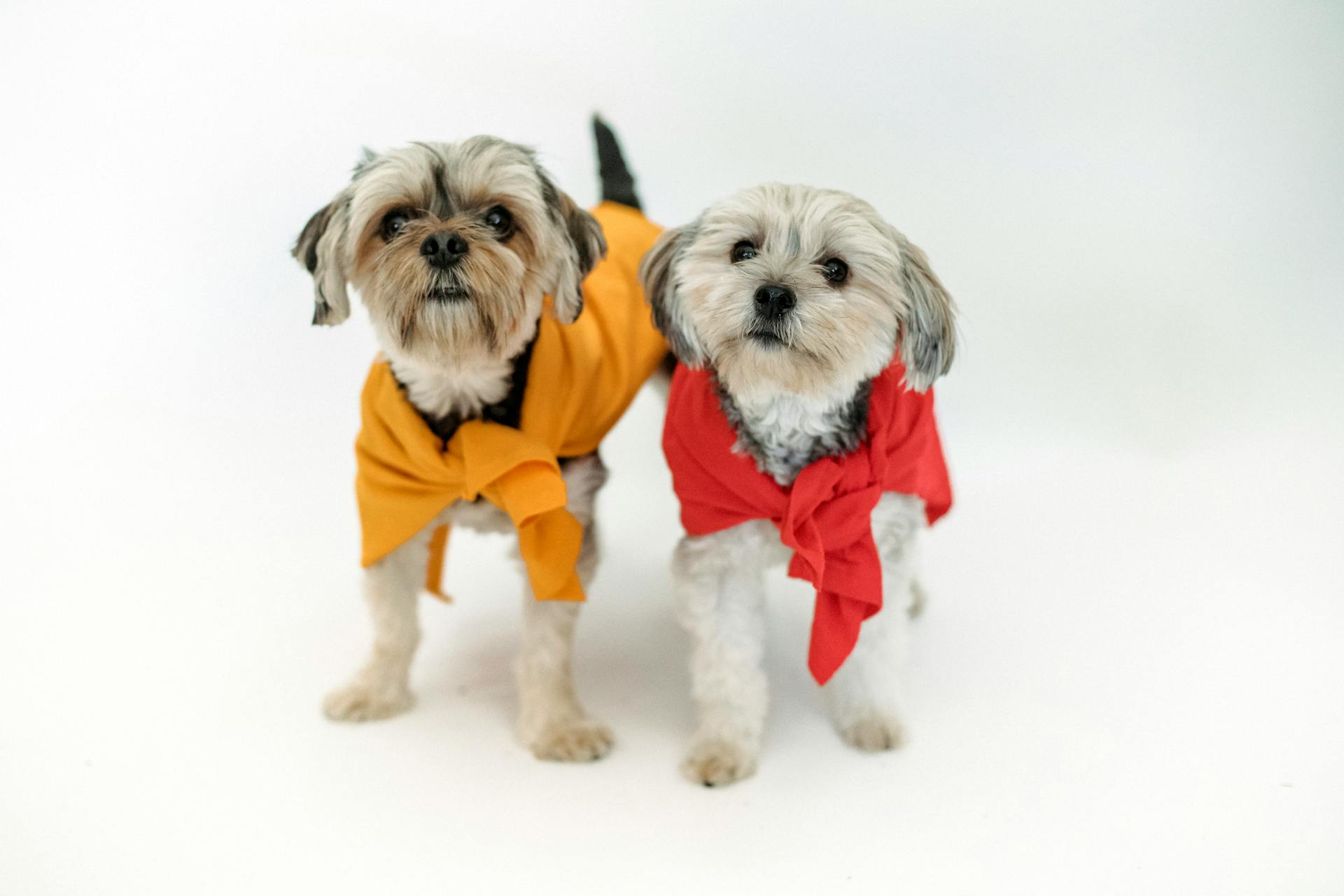
Havanese dogs, however, tend to have separation anxiety when their owners leave them alone at home because they bond very closely with them. This means they require regular attention and interaction from their owners.
Coton de Tulear dogs, on the other hand, do best when a family member is at home during the day or if their workplace is dog-friendly so they can take the dog at work. This suggests that they are more independent than Havanese dogs and can tolerate being alone for short periods of time.
In terms of adaptability, both breeds are equally well-suited to different living environments. However, their independence needs differ significantly.
Health and Care
The Havanese, Coton de Tulear, and Bichon Frise are all healthy breeds, but they do have certain health issues that you should check with your vet regularly.
Both the Havanese and Coton de Tulear are prone to hip dysplasia, a genetic condition that can lead to arthritis and mobility issues. The Havanese is also susceptible to cataracts, heart murmurs, and patellar luxation.
A unique perspective: Havanese Health Problems
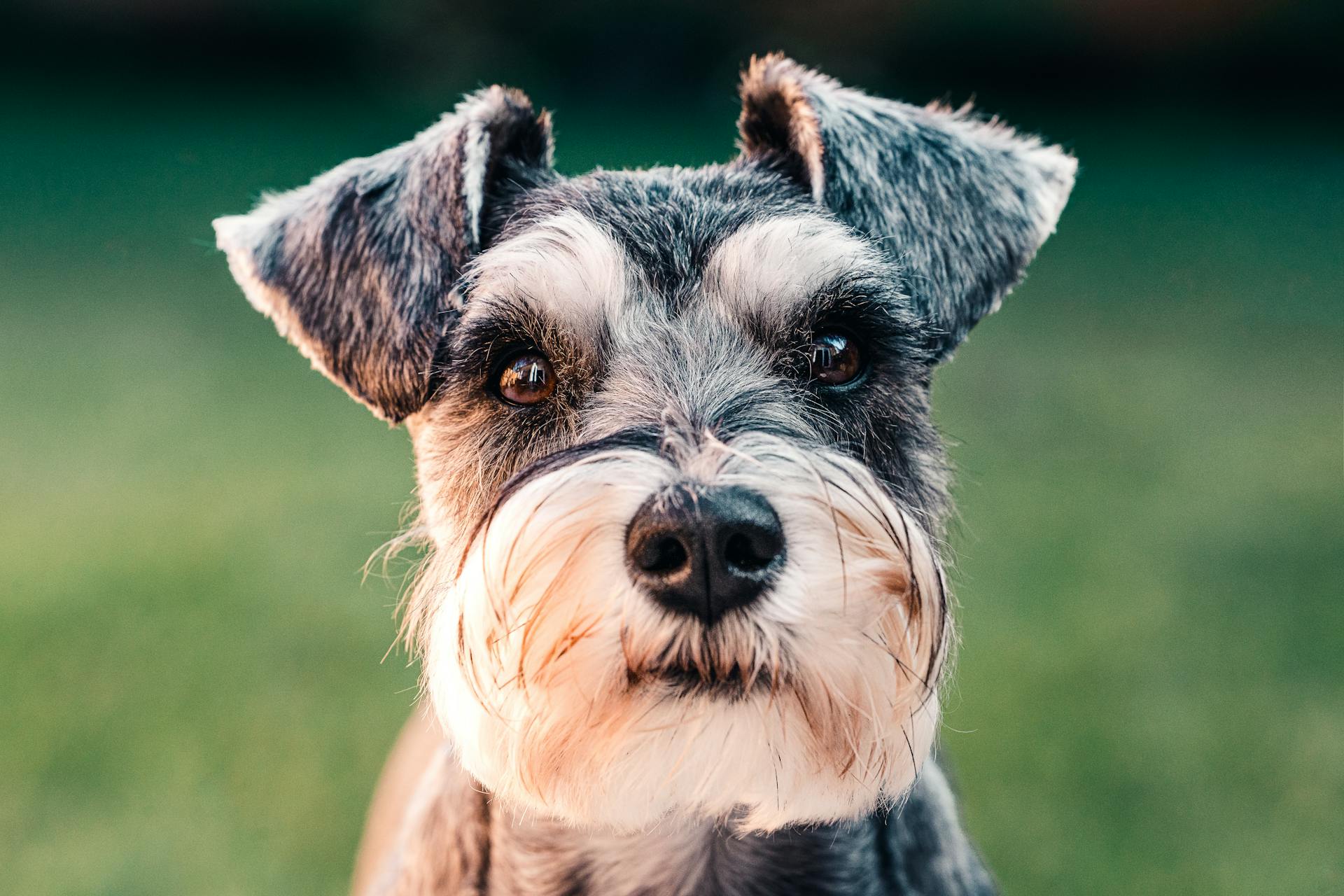
The Coton de Tulear and Havanese have similar life expectancies, ranging from 14 to 16 years. Regular veterinary check-ups are essential to ensure they stay healthy and happy.
Here are some common health issues to watch out for in these breeds:
It's essential to monitor your dog's health and catch any potential issues early on. Regular veterinary check-ups and a balanced diet can go a long way in keeping your furry friend happy and healthy.
Care Needs
When it comes to caring for your Bichon Frise, Coton de Tulear, or Havanese, regular veterinary visits are crucial to prevent and detect potential health issues.
The Bichon Frise, Coton de Tulear, and Havanese should have a complete physical check-up at least once per year.
Grooming is essential for these breeds, especially the Coton de Tulear, which requires regular brushing sessions to prevent matting and tangling.
To keep your Coton de Tulear's coat clean and healthy, bathe them every two to three weeks, using a mild and vet-recommended dog shampoo.
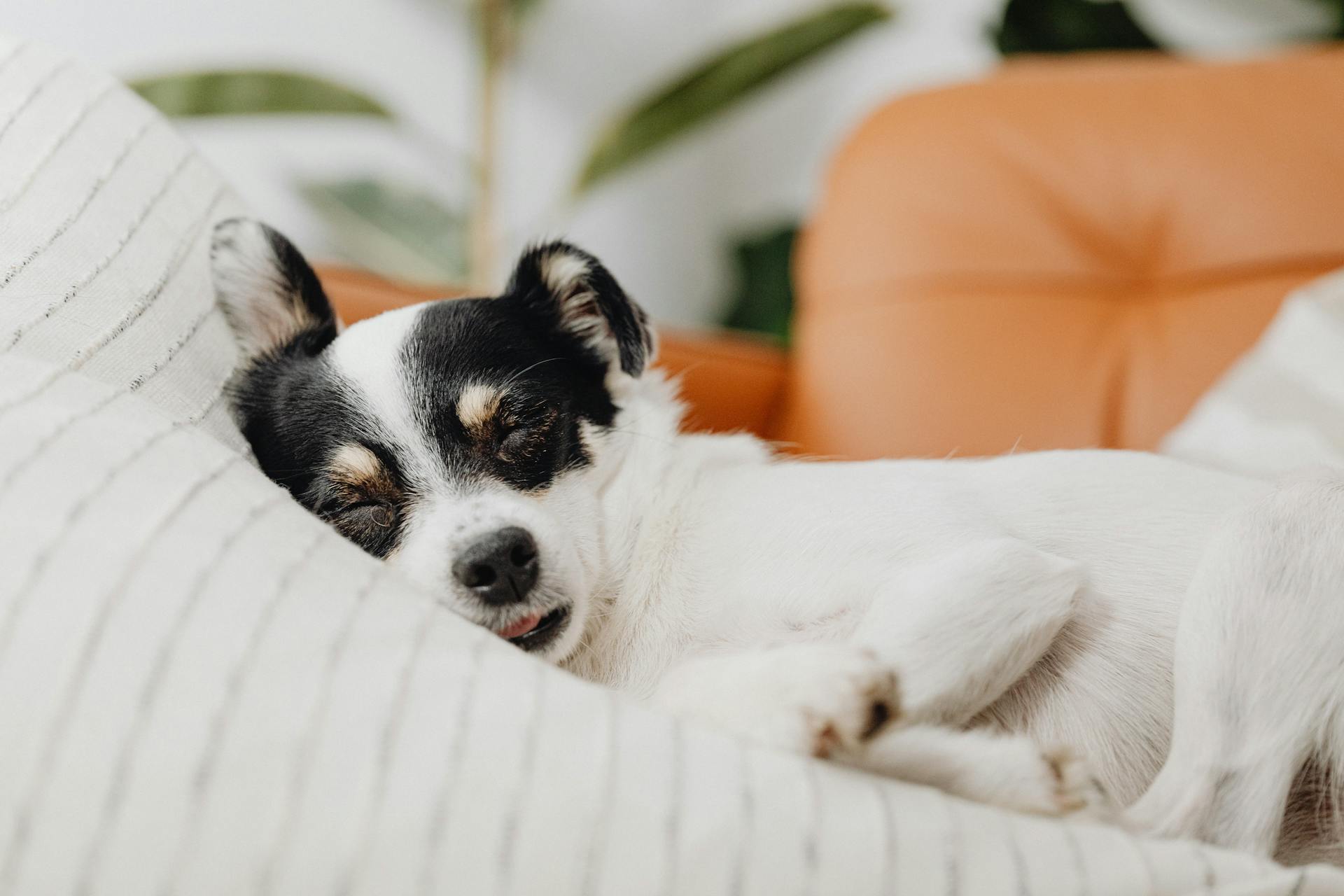
Regular dental care is also vital for these breeds, with the Havanese requiring brushing three to four times a week and dental chews to keep their mouth and teeth clean.
Here's a brief rundown of the grooming needs of each breed:
These breeds are generally low shedders, with the Havanese shedding none to minimal and the Coton de Tulear being a low shedder as well.
However, they do require regular grooming to prevent matting and tangling, especially the Coton de Tulear.
To keep your dog's coat looking its best, brush them regularly, trim the hair between the toes and pads, and keep the eyes and ears clean.
By following these care needs, you can help ensure your Bichon Frise, Coton de Tulear, or Havanese lives a happy and healthy life.
Diet and Lifestyle
When feeding your Coton de Tulear or Havanese, it's essential to keep their diet in check. The average daily food consumption for a Havanese is 1/2 to 1 cup dry food a day.
Discover more: Havanese Food
To manage their weight, both breeds require regular meal times and portion control. The Coton de Tulear, in particular, needs 0.5 to 1.5 cups of high-quality dry food a day, divided into two meals.
The Havanese is more prone to obesity if left unchecked, while the Coton de Tulear has an average risk for obesity. To prevent weight gain, monitor your dog's food intake and ensure they get enough exercise.
Diet and Lifestyle
When feeding your furry friend, it's essential to consider their breed's specific needs. The Havanese, for instance, requires 1/2 to 1 cup of dry food per day, divided into two meals.
The Bichon Frise and Coton de Tulear, on the other hand, need 0.5 to 1.5 cups of high-quality dry food per day, divided into two meals.
If you don't pay attention to your Havanese's weight, he can easily gain weight, making him prone to obesity. The same goes for the Bichon Frise, who also has an average to high risk of obesity.
Additional reading: Are Havanese Dogs High Maintenance
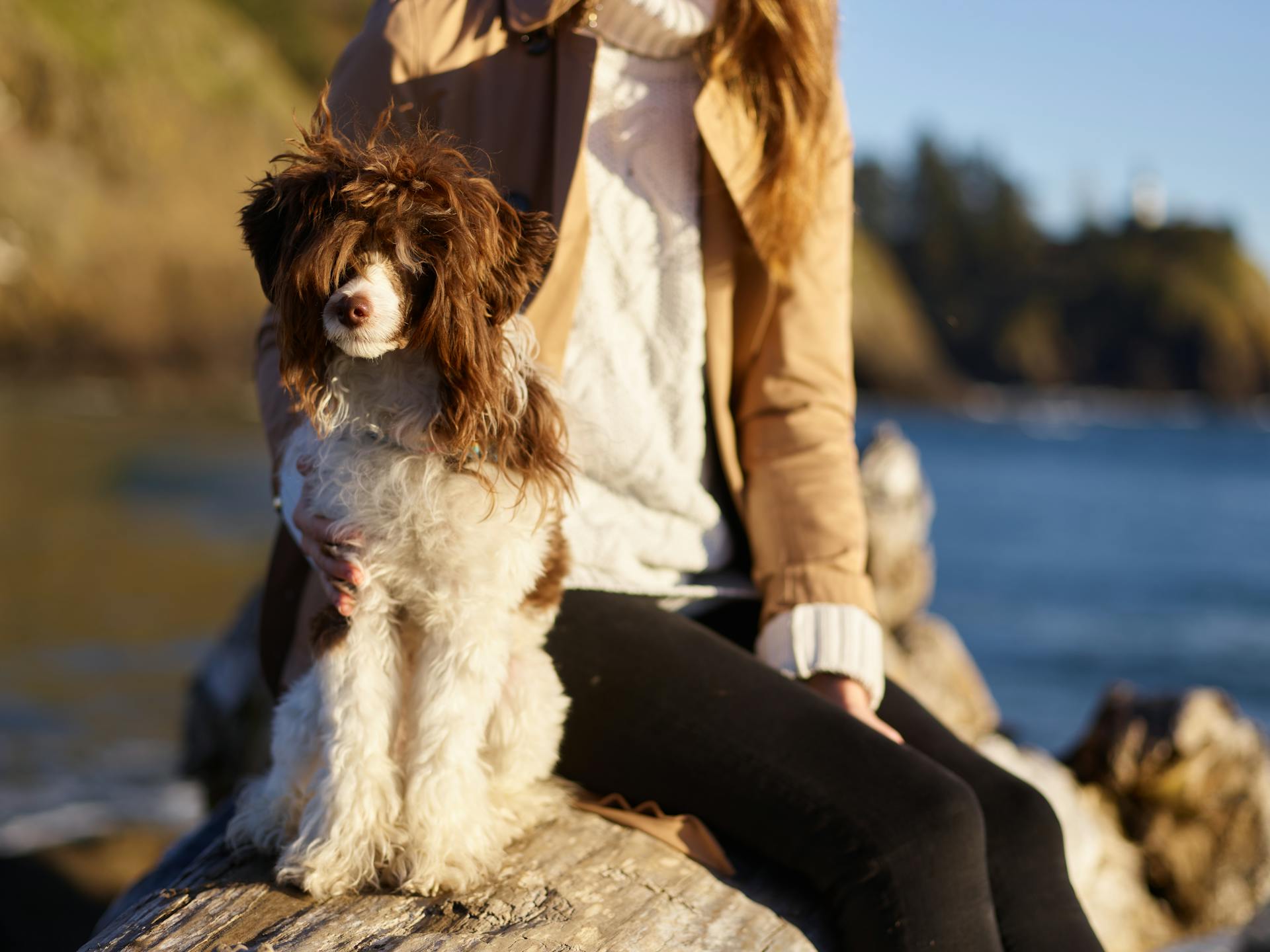
The Coton de Tulear has an average risk for obesity, but it's still crucial to monitor their food intake to prevent weight gain. By knowing your dog's breed-specific needs, you can ensure they stay healthy and happy.
Here's a quick reference guide to the average daily food consumption of these breeds:
By being mindful of your dog's diet and lifestyle, you can help them live a long, healthy life. Remember, every breed is unique, so it's essential to research their specific needs to ensure you're providing the best care possible.
Energy and Activity
When it comes to energy levels, some dog breeds are naturally more laid-back than others. The Bichon Frise is a low-energy breed that requires minimal exercise, making it a great choice for apartment living.
The Havanese and Coton de Tulear, on the other hand, have an average energy level, requiring a semi-active lifestyle to keep them happy and healthy. This means they need regular walks and playtime, but they're not high-maintenance like some other breeds.
A different take: Havanese Cross Breeds
If you're looking for a breed that will keep you on your toes, the Havanese might be a good choice. With its high playfulness level, it's always up for an adventure and will keep you active and engaged.
Here's a quick comparison of the energy levels of these three breeds:
Overall, the energy level of your dog will depend on its breed and individual personality. By choosing a breed that fits your lifestyle, you can ensure a happy and healthy relationship with your furry friend.
Consider reading: Havanese Breed Standard
What Is the Price of?
The cost of owning a pet can be a significant factor in deciding which breed to bring home. The price of a Bichon Frise, Coton de Tulear, or Havanese can range from $700 to $1000, $2400 to $3000, and $900 to $1200 respectively.
If you're looking for a more affordable option, the Bichon Frise is a good choice, with prices ranging from $700 to $1000. The Coton de Tulear and Havanese are also relatively easy to get, with frequent availability.
Here's a comparison of the prices of these three breeds:
If you're interested in a Coton de Tulear specifically, be prepared for a price tag of between $2,000 to $3,000. Show quality dogs can cost even higher, ranging from $3,000 to $4,000.
Breed Information
The Coton de Tulear is a small, sweet-natured breed that thrives on human interaction. They love to be around people and can suffer from separation anxiety if left alone for long.
Their origin is in Madagascar, where they were bred and originated. They are closely related to the Maltese and Bichon Frise breeds.
The Coton de Tulear has a low-maintenance coat that requires regular grooming, but dirt falls out easily. They need brushing a few times a week to avoid hair mats and tangles.
Here's a comparison of the breed recognition for Coton de Tulear and Havanese:
Both breeds are recognized by multiple kennel clubs, including the American Kennel Club, Federation Cynologique Internationale, and others.
Breed History
The Coton de Tulear breed has a rich and fascinating history. The dogs are named after the seaport town of Tulear in Madagascar.
The breed originated as beloved lap dogs and companions of the noblemen and gentry of Madagascar. They were treasured as luxury items and were often taken on sea voyages.
Some say that small white dogs like Maltese traveled with the noble ladies on a sea voyage and ended up on a beach in Madagascar. Others claim that small white dogs swam ashore on the island and mated with feral dogs.
The dogs remained isolated on the island until 1960. A French merchant took some of these dogs back to his hometown in 1970, where the breed was established and selectively bred for generations.
The breed was refined over time, and today's Coton de Tulear is the result of this careful breeding. The AKC recognized the breed in 2014, registering its first Coton in the AKC's Foundation Stock Service (FSS).
You might like: Akc Havanese
Breed Information
The Coton de Tulear is a small, sweet-natured breed that thrives on human interaction. They love to follow their family around and will not be kept away from their beloved person by any fence.
These dogs are very expressive and love to "talk" with people. They are alert and always want your attention.
The Coton de Tulear got its name from its cottony coat and the seaport city of Tulear, Madagascar, where the breed originated. They are closely related to Maltese and Bichon Frise.
The Coton de Tulear is a people-pleaser and excels in obedience and agility activities. They love everyone, making them poor guard dogs.
Their coat is easy to care for, especially after they grow their adult coat. Regular grooming and occasional bathing will keep their coat looking great.
Coton de Tulears need brushing a few times a week to avoid hair mats and tangles. They are adaptable and can adjust to their owner's routine.
Here are some key breed recognition facts:
Accepted Breed Standard
The Coton de Tulear is a small but sturdy dog, with males standing 10 to 12 inches tall and females standing 9 to 10 inches tall.
They come in two main colors: white and black, with limited multicolor markings acceptable.
The breed standard emphasizes their physical structure, with a bit of arch in the top line of the body.
Coton de Tulears are known for their soft, long fur and lively, expressive eyes.
Their weight ranges from 8 to 15 pounds, depending on whether they're male or female.
These dogs are generally easygoing and gentle, making them a great fit for many families.
Their lifespan is impressive, averaging 16-19 years, which is well above average for many breeds.
Coton de Tulear vs Havanese
Coton de Tulears go crazy with small animals, often running to catch them. This is according to one owner who has experience with the breed.
Havanese, on the other hand, are also prone to barking and chasing small animals. In fact, one owner notes that both breeds can be quite the barkers.
Both Coton de Tulears and Havanese are highly trainable, with one owner reporting that their Coton de Tulear learned to do tricks quickly. Another owner notes that housebreaking can take some time, but is definitely possible.
Here's a comparison of some key traits of the two breeds:
Overall, both breeds are known for their intelligence and trainability, making them a great choice for novice owners and families.
General Information
The Coton de Tulear is a small, sweet-natured breed that thrives on human interaction. They love to follow their family around and can't be kept away from their favorite person.
These dogs are extremely expressive and love to "talk" with their owners. They're very alert and make sure they have your attention all the time.
The Coton de Tulear originated in Madagascar and is closely related to the Maltese and Bichon Frise breeds. Their name comes from their cottony coat and the seaport city of Tulear.
They're intelligent, social, and easy to groom, making them a great choice for many owners. Coton lovers value their dogs for these qualities and more.
A Coton de Tulear learns routines quickly and will often sleep while you work, but they remain alert and watchful. They're not high-maintenance dogs when it comes to exercise, either.
A daily walk at a slow pace or a game of fetch in a fenced yard is enough to keep a Coton happy and healthy. They're not suited for extensive exercise or high-energy activities.
Cotons are people pleasers and excel in obedience and agility activities. However, their friendly nature makes them poor guard dogs.
Frequently Asked Questions
What are the disadvantages of a Coton de Tulear?
Coton de Tulears are prone to certain health issues, including luxating patella, hip dysplasia, liver shunt, disc problems, and eye concerns, which can impact their quality of life and require regular veterinary care. Understanding these potential disadvantages can help you make an informed decision about bringing a Coton de Tulear into your family.
What is the closest breed to a Coton de Tulear?
The closest breeds to a Coton de Tulear are the Bichon Frise, Maltese, and Havanese, all of which share similar characteristics with this small, fluffy dog. These breeds are also its closest relatives, originating from similar regions.
Sources
- https://dogell.com/en/compare-dog-breeds/havanese-vs-coton-de-tulear
- https://dogell.com/compare-dog-breeds/bichon-frise-vs-coton-de-tulear-vs-havanese
- https://www.realesaletter.com/blog/dog-breeds/coton-de-tulear
- https://www.dogster.com/dog-breeds/coton-de-tulear-vs-havanese
- https://be.chewy.com/dog-breeds/compare/havanese-vs-coton-de-tulear/
Featured Images: pexels.com

